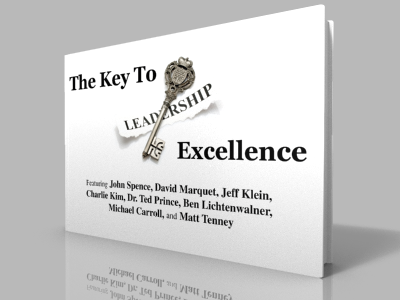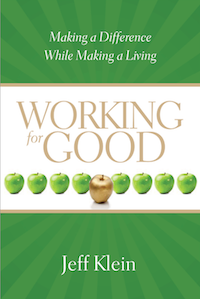Better SEO – Self-Effectiveness Optimization
A Different Type of SEO – Self-Effectiveness Optimization:
How mindfulness training improves our personal effectiveness.
Capitalize The “We”
Great Leaders Focus on Capitalizing the We
i can’t believe that i never noticed this before. Reading the other day, i wondered why the personal pro-noun “i” is always capitalized, but not “We”. Great leaders focus on capitalizing the We.
Although we might just view this as a convention of language, to me it is quite striking that our language capitalizes the “i” but no other personal pronoun. It is a reflection of our attachment to the importance of the individual over the importance of the greater good.
Perhaps this can help explain why we tend towards selfishness. Language is a key element of our worldview. If our language is set up to value ourselves over others, our minds are more inclined to do so as well.
As i reflected on this, it occurred to me that the more ideal language structure would be to only capitalize the personal pronoun, “We.”
Great leaders know that one of the keys to success is focusing on the We more than the i.
If we’re promoted into a leadership position, it’s probably because we’re really good at what we do. One of the most difficult challenges most leaders face is to continuously be shifting away from the idea that “i have to do it,” and moving towards, “We do it together.”
As leaders our success is no longer measured by our personal accomplishments. Our success is measured by what our people accomplish as a team. This requires a whole new skill set. It requires us to always be thinking in terms of We.
When We think in terms of We more often, We naturally find ways to better serve our people. When We serve our people, they better serve our customer or members.
This is the secret to success isn’t it. The organization that best understands and meets the needs of the customer or the member is the one that wins in the long term.
Here’s an interesting experiment. Try eliminating the word “i” from your vocabulary for a day and replace it with “We”.
What do you notice when you try this out?
Surprising Links Between Cockroaches, Compassion, and Profits
A Guest Post that Appeared on The Huffington Post on the Surprising Links Between Cockroaches, Compassion, and Profits
How to Create a Highly Innovative Culture (Part 2)
“In early January 2009, Goodnight held a global webcast and announced that none of its 13,000 worldwide employees would lose their job. He simply asked them all to be vigilant with spending and to help the firm endure the storm. ‘By making it very clear that no one was going to be laid off,’ Goodnight told me, ‘suddenly we cut out huge amounts of chatter, concern, and worry – and people got back to work.’ What likely will be astonishing to many is that SAS had record profits in 2009 even though Goodnight was perfectly willing to let his then-33-year track record of increased profit come to an end.
“At 70 years old, Goodnight holds the conviction that ‘what makes his organization work are the new ideas that come out of his employee’s brains.’ He therefore holds his employees in the highest esteem. So while he fully anticipated that the recession would constrain the firm’s short-term revenues, he instinctively knew that his team would produce breakthrough products while his competitors were cutting costs. And even four years later, his commitment to his people has paid off handsomely. Said Goodnight, ‘new stuff we’re rolling out this year is going to take the market by storm.’”
How to Create a Highly Innovative Culture (Part 1)
Can You Do Good and Still be Successful?
Our world is filled with endless choices. Do we focus on social media or personal relationships? Do we eat low carbs or low fat, or both? Do we take the red pill or the blue pill?
Love and care similarly bring out the best and most in people. If you care about and for the people you work with and if they care about and for you, your connection to them is deep, and you are motivated to serve and support each other.
When people are aligned and alighted in purpose, supporting and serving each other — and others who they come in contact with (including customers and other stakeholders of the business) — the business is alive. It attracts attention and fosters relationships built on trust and loyalty, which leads to resilience and sustainability.
This is very good for business!
Seek A Meaningful Life Instead Of A Pleasant One
Would you like an incredibly simple yet powerful tool for excelling as a leader and living a happier life?
Try focusing more of your energy on doing things that make life meaningful instead of on trying to make life more pleasant.
We could never make every moment of life pleasant. It’s an exercise in futility. No matter how hard we try, there will always be ups and downs, sickness, loss, old age, and death. Thus, from a logical standpoint, trying to make our lives more pleasant is not the best place to focus our energy.
Also, deep down, we know that pleasantness doesn’t result in greater happiness. We know that there are countless wealthy people, living the most pleasant lives we can imagine, who have to take medication to deal with the emptiness and depression they feel. In fact, there is now over ten years of research from the field of positive psychology demonstrating very clearly that our happiness has little to do with how pleasant our lives are.
But, we humans can easily becomes creatures of habit, conditioned by our surroundings to behave in certain ways. In our modern culture, we are bombarded with the idea that we’ll be happier if we have more stuff or make our lives more pleasant. As a result of this conditioning, it’s easy to start believing that it’s true.
Unfortunately, when we get caught in the trap of thinking that life will be better if we make it more pleasant, there are numerous negative ramifications.
One ramification is focusing too much on money at the expense of people. This can result in great short-term success, but never in long-term success. If we don’t care for our people – customers, vendors, and employees – our success will not be sustainable.
Focusing on pleasantness also results in avoiding tough conversations that we need to have. According to my friend, John Spence, one of the top executive trainers in the world, this is one of the biggest issues faced by businesses today. Many businesses simply aren’t talking about the things that are tough to discuss, but really important to the success of the business. Avoiding these conversations helps keep life pleasant in the short term. But, in the long term, the consequences of avoiding tough conversations are often detrimental.
Over time, focusing on making life pleasant in the short term results in leadership failures and dissatisfaction with our lives. But it doesn’t have to be this way. We can gradually end the habit to seek out pleasantness and form the habit of creating a meaningful life.
If you want to excel as a leader and live a deeply meaningful and happy life, simply shift your focus to how you can better serve the people around you instead of how you can make your own life more pleasant.
The first step is to make a clear distinction between what we need in our lives, and what we simply want. I’ve found that the more I replace things and activities I simply want with efforts to be of greater service to those around me, the happier I have become and the more excited I am about waking up to start my day because it is filled with increasingly greater meaning.
Assuming that we’re taking care of our basic needs, we can start shifting our focus away from making life more pleasant to creating a life of meaning by asking this question every day, several times a day: What can I do to better serve the people around me?
If you try this for a month, I believe you’ll see a significant, positive shift in your life.
Are You A Leader, Or Just A Manager?
It seems that on almost a daily basis I see or hear the words “leader” and “manager” used interchangeably. In fact, I sometimes catch myself using them interchangeably, too.
But, when we look closely, it becomes clear that “leader” and “manager” are not necessarily synonymous. A leader doesn’t necessarily need to be in a management position. And there are many people in management positions that are certainly not leaders.
Confused? I hope to clarify below.
What is a manager?
The first definition of “manager” that appears when I search with Google is “A person responsible for controlling or administering all or part of a company or similar organization.” For a person to have such responsibilities, they almost always have a title like “manager” or “supervisor” or “director”. But having a title doesn’t make someone a leader. If a person has a title but no one is willingly following her or him, then she or he is not a leader. She or he is just a manager.
What is a leader?
We are only a leader when we are influencing people’s behaviors in a way that results in them willingly following us. The ability to influence people’s behaviors doesn’t require a title or management position. The two leaders who were arguably the most influential in history, Jesus and Gandhi, had no title at all. But they influenced billions of people’s behaviors and billions of people willingly followed them (many still do). Gandhi’s leadership ended the oppressive British rule over India, liberating hundreds of millions of people.
These two leaders also built their influence in exactly the same way. They both focused on loving and serving the people around them and they had impeccable character. I believe that there is no better way to build influence than this. When people know that we truly care about them and want to help them, they are much more willing to follow us. When they see that we consistently do the right thing in a caring way, even when it is very difficult to do, we inspire our followers by our example.
What are some ways you are leading by example, whether or not you have a title?
How focused are you on serving your people in ways that help them grow as human beings and achieve greater personal and professional success?
What Can I Give? – A Powerful Question for Being a Great Leader
Want an extremely simple way to dramatically improve your effectiveness as a leader?
Start thinking in terms of what you can give the people you lead instead of what you can get out of them.
To go from being just a “manager” to being a leader, we should shift our mentality from being a taskmaster to being a mentor.
If we’re doing our job as a manager, it should be a given that we set clear expectations for our people and let them know that we’ll hold them accountable to meeting those expectations. But that definitely shouldn’t be where we focus our energy.
We should focus our energy on finding ways that we can help our people to be happier, both at work and away from work, and to continuously grow both personally and professionally.
We should know what goals and aspirations our people have, both at work and away from work, and do whatever we can to help our people reach those goals (provided they are positive of course).
What happens when we personally invest in the development and well-being of our people?
For one, by truly caring about our people and consistently demonstrating that we care, we build influence. People want to do great things not because of fear of reprisal if they don’t do them, but because they don’t want to let us down.
We also build a culture of trust and service that people want to be around. This is a simple way to gain one of the few competitive advantages that still remain in today’s business world – the ability to attract and retain top talent. One company that has been proving this for years is nextjump, which had a 0.2% hire rate last year (almost 18,000 applications for 35 positions) and has almost no turnover. Their stated reason for existing as a company, their “Why”, is “To do the little things that allow others to do the great things they are meant to do.”
Most important in the grand scheme of things it that we find we’re happier and enjoy going to work more. Being a mentor who helps people achieve greatness is much more rewarding and meaningful than being only a manager.
What are some ways you are helping your people to be happier and continuously grow?
Did you like this post? To receive The Ultimate Leaders E-Zine for FREE, just Click Here. It includes all my blog posts, interviews with great leaders, and other resources to help you become the Ultimate Leader.













